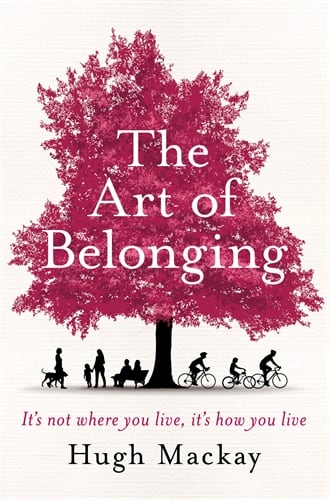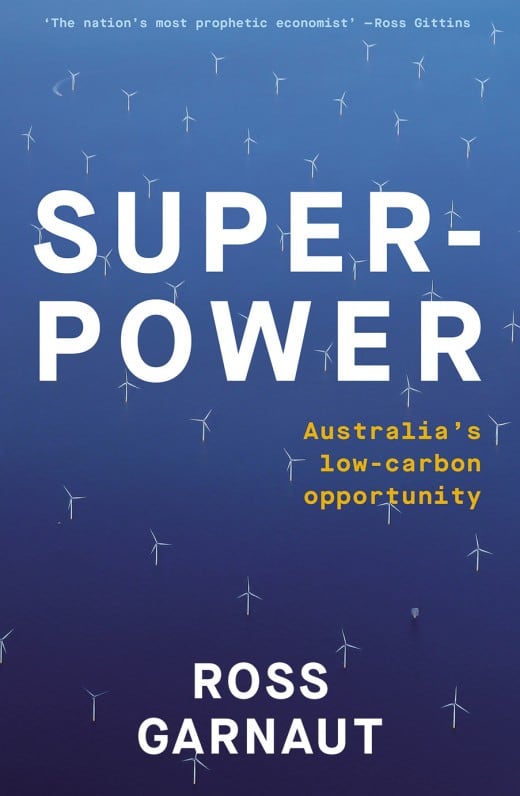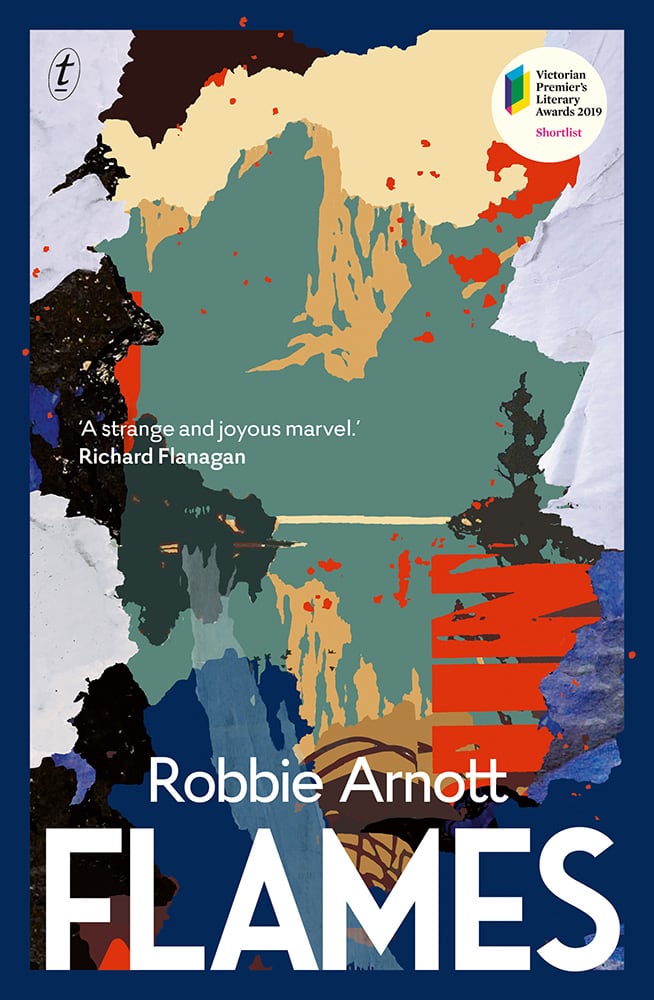12 books the Australian Geographic team recommend you hunker down with

Chrissie Goldrick, Editor-in-Chief
The art of belonging: it’s not where you live but how you live by Hugh Mackay

During a time when many of us are confined to our homes and localities, leading social commentator Hugh Mackay’s 2014 examination of the state of Australian communities is worth another read.
Hugh reminds us of the value and importance of local communities and of the responsibility that we all bear in contributing to their health and wellbeing. We can choose to belong to any number of special interest groups based on shared passions or like-mindedness, but we don’t get a say in who moves in next door. It can be challenging to rub along with the neighbours but is a true test of the value of placing the needs of the community before our own for the greater good.
Community connectedness has been recorded as a contributing factor in the survival of victims in the recent bushfire disaster and, as the COVID-19 pandemic develops and many are forced to stay close to home, there’s never been a better time to say hello and how are you to the people along your street or in your block. Just save the handshake for later!
Superpower: Australia’s low carbon opportunity by Ross Garnaut

Economist Ross Garnaut authored the 2008 Climate Change Review that called, in that first decade of the new millennium, for Australia to respond to the threat of climate change and to lead the way towards a low carbon economy by connecting scientific knowledge and innovation to policy making. Last year Ross released Superpower just ahead of the worst bushfire season in living memory, calmly arguing that Australia already has the capacity to decarbonise and meet its agreed Paris targets by harnessing clean energy innovation and low cost finance. And while COVID-19 has sent the global economy into a tailspin and pushed environmental issues off the main agenda for now, once it’s over and whatever the fallout may look like, the urgent need to address anthropogenic climate change will loom large once again.
Love in the time of cholera by Gabriel Garcia Marquez

I added this more for the title than for the book. It’s not my favourite Marquez (that’s One Hundred Years of Solitude: perhaps just as appropriate right now) but when you’re stuck for weeks at home alone (or wishing you were alone) and even the most engrossing Netflix blockbuster series can no longer hold your attention, a foray into the beguiling world, language and ideas of Colombia’s most feted author will undoubtedly challenge your mind and enrich your life. In Cholera, Marquez explores the nature of love and desire in all their best and worst manifestations through the story of its two protagonists whose one-sided love story plays out over 50 years in an unidentified port city in late 19th and early 20thcentury South America, where plagues like cholera were a terrifying and common reality. The Nobel Prize for Literature winning work today attracts both praise and opprobrium, so turn off the TV, give it a go, and make up your own mind.
Lauren Smith, Commercial managing editor
Flames by Robbie Arnott

This novel is set in Tassie, and it’s got that same mystery that you can’t help but sense when you’re hiking quietly in the wilderness of the area around Ben Lomond and you’re suddenly met with a wombat, coolly taking you in. It’s a wild tangle of a story, following multiple characters including a talking rakali who happens to be the god of the South Esk River. Beyond the magic realism, it’s a story about a family – about love and grief and joy and how tightly woven those feelings are.
The Memory Pool edited by Therese Spruhan

A collection of stories about experiences in Australian swimming pools – be they sun-soaked, lane-marked suburban pools, wild coastal pools or backyard pools – from a diverse group of Australians, including Trent Dalton, Shane Gould and Bryan Brown. I started learn-to-swim classes before I had even turned one, and have mostly been in the water ever since. Every story in the collection, each beautifully told, dredges up memories – I can almost the chlorine when reading about Bryan Brown’s experiences at Bankstown Pool, and recall the exact dizziness that comes with spinning around and around beneath the surface like Tess Lea at the Parap Pool, and remember my awed amazement when I saw Bermagui Blue Pool for the first time, like Lizzie Buckmaster Dove.
Australia’s First Naturalists by Penny Olsen and Lynette Russell
This book examines early zoology in Australia and the significant contribution of Indigenous Australians that made that possible. The book traces the overall story from the connection to land and animals that existed between Indigenous groups before the arrival of Europeans through to 1939 by focusing on the stories of particular naturalists and their Indigenous colleagues; such as George Caley and Moowattin, from the Dharug clan of the Eora nation, who collected numerous specimens together. In a later chapter, John Gould’s beautiful illustration of a superb lyrebird is given new depth with the understanding of how Geawegal man Natty was able to approach and collect a specimen where Gould had struggled. It’s a wonderful and important book, retelling the story of the early study of Australia’s magnificent fauna, in a way that brings Indigenous knowledge and understanding to the forefront.
Angela Heathcote, Digital producer
On Fire by Naomi Klein

Naomi Klein’s On Fire is a collection of essays, articles and speeches on climate change, specifically the need for a Green New Deal to usher in the social, economic and environmental changes we need in order to beat the crisis. There’s so much to love about this compilation: its honesty, precision and perspective. However, I particularly enjoyed the chapter Stop Trying to Save the World All by Yourself, where Klein critiques how western culture teaches us to express our climate action through personal lifestyle changes, rather than pushing for social change and The Art of the Green New Deal, where she stresses the importance of storytellers in re-envisioning a climate-conscious future.
Weather by Jenny Offill

Weather tells the story of Lizzie, a university librarian who is hired by her former academic mentor to answer the emails she gets about her climate-focused podcast Hell or High Water. What I like most about Weather is that it grapples with the question I ask myself most days: how can I be so aware of and concerned about the climate change crisis, but still be able to go about my daily life without constantly panicking?’ I think New York Times Book Review critic Parul Sehgal explains this best when she says, “Offill doesn’t write about the climate crisis but from deep within it. She does not paint pictures of apocalyptic scenarios; she charts internal cartographies.”
The Southern Reach Trilogy by Jeff Vandermeer
When I heard that Jeff Vandermeer would be at the Sydney Writers Festival I squealed… and then sobbed when the festival was cancelled. Hailed as the ‘Weird Thoreau’ by The New Yorker, Vandermeer is the unofficial king of the emerging genre of climate fiction, better known as ‘cli-fi’. The Southern Reach trilogy, of which Annihilation is the first installment, tells the story of an all-female scientific expedition to ‘Area X’ a mysterious place that no human has ever returned from, or at least never returned and survived. The books are subtly infused with environmental philosophy that will change the way you think about the human impact on the world.
Justin Walker, Australian Geographic Adventure Editor
The Emerald Mile by Kevin Fedarko

Even now, it sounds too crazy a plan to be true. In 1983, a group of river guides in a hand-built wooden dory, led by Kenton Grua, took advantage of a heavily flooded Colorado River (the result of a record snowmelt) to run this famous river at its most powerful. Miraculously, the team of three survived and, by doing so, recorded the then-fastest ever boat ride (powered or unpowered) down the full length of river in 1983. Author Kevin Ferdarko does a brilliant job of putting readers in the dory with the crew for an incredible ride downriver.
Touching The Void by Joe Simpson

This (relatively modern) climbing classic is an absolute belter, with all the adventure, emotion and heart-stopping moments you could want in a Hollywood thriller – yet it is true. The crux of the story – the moment where Simpson’s climbing partner, Simon Yates, believes the only way to save himself from joining his presumed-dead partner (Simpson), hanging unseen at the end of a climbing rope, in the afterworld, is to cut the rope connecting the two has to be re-read again, and again. What happens after – Simpson survives the fall into a crevasse, crawls deeper into the crevasse, and eventually drags himself three days later all the way back to basecamp – is something no scriptwriter could conjure.
Shooting the Franklin by Johnson Dean
This cracking read follows the trials and tribulations of a group of mates who grew up paddling some of Tasmania’s most famous rivers including, of course, the Franklin. Dean and his crew made three attempts on the Franklin before succeeding in 1958. Along the way they experimented with everything from fold-up kayaks to fibreglass canoes – the craft used in the successful descent. The descents themselves were amazing – both in terms of what they paddled and how the men survived; the two earlier attempts resulted in near-drownings, destroyed watercraft and long walks back out to civilisation. It’s an amazing story.




